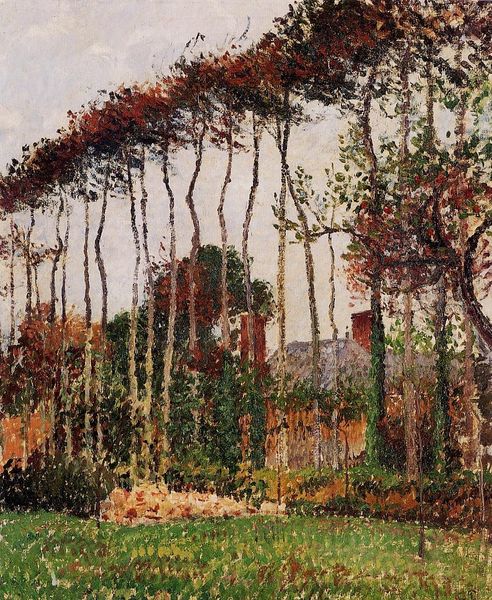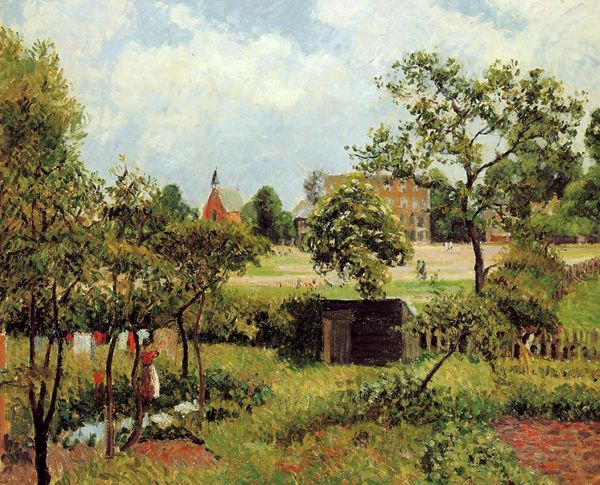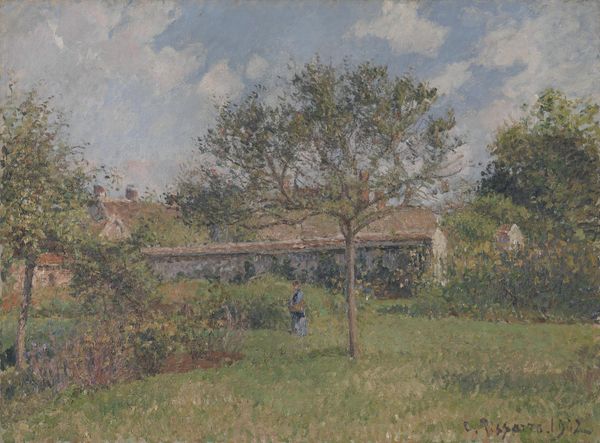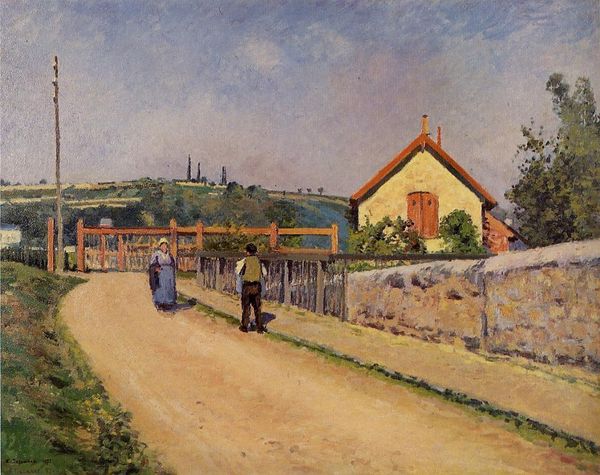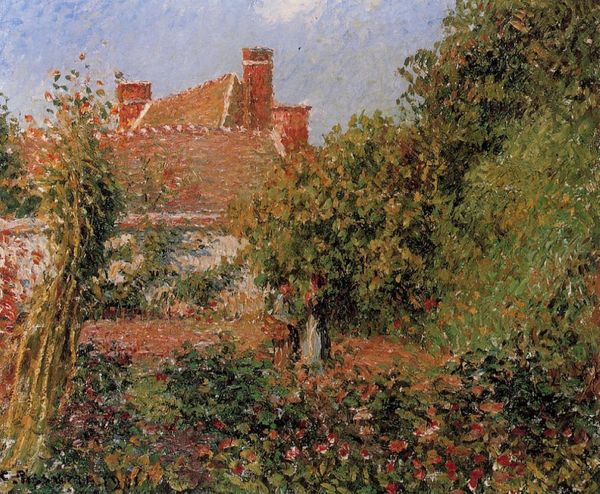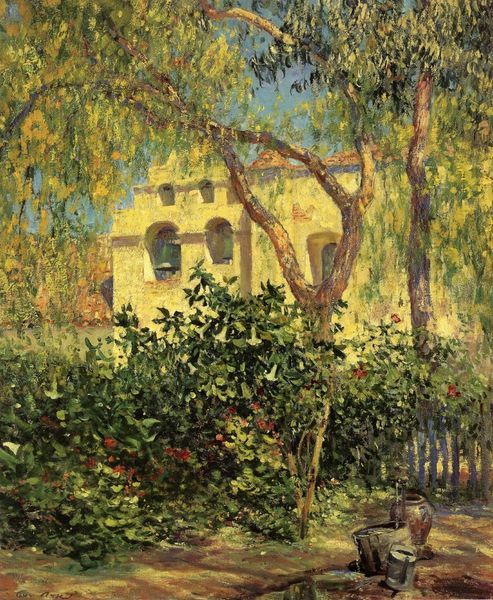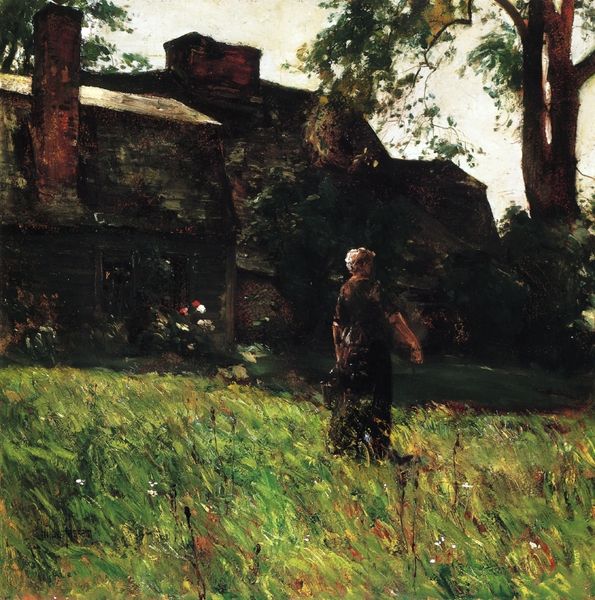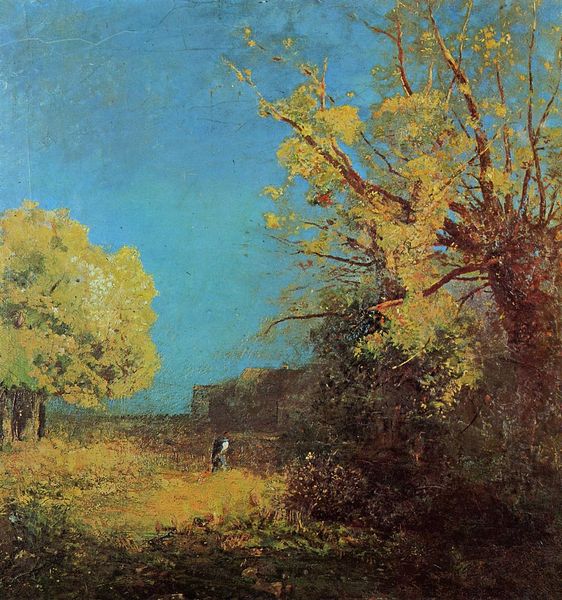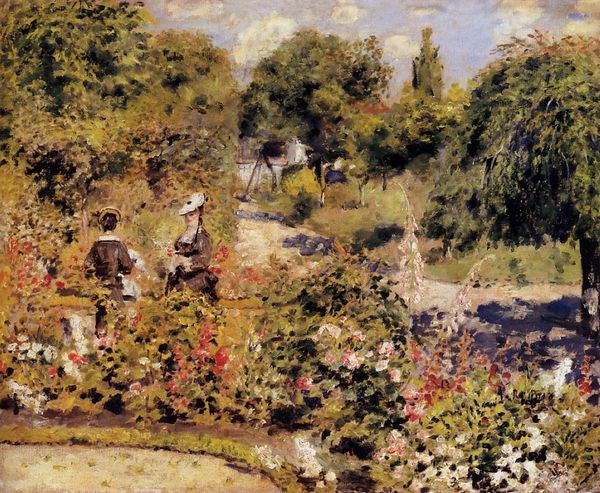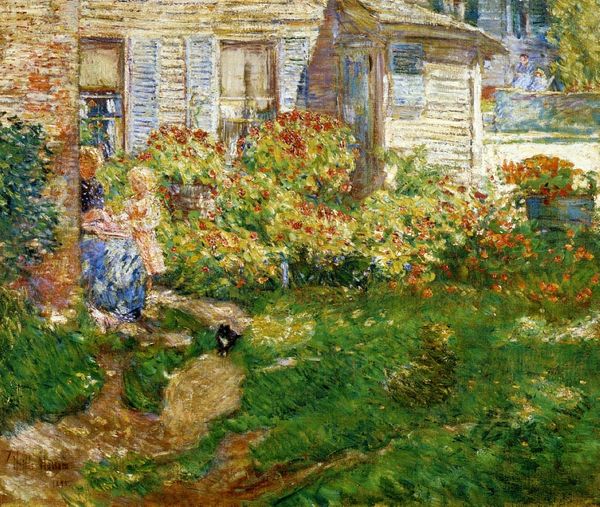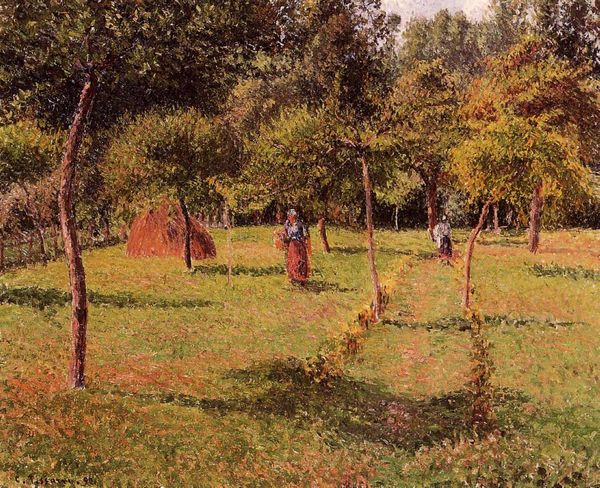
painting, plein-air, oil-paint
#
painting
#
impressionism
#
plein-air
#
oil-paint
#
landscape
#
impressionist landscape
#
oil painting
#
genre-painting
Copyright: Public domain
Curator: Let's discuss this Impressionistic landscape scene. It's titled "The Railroad Bridge at Bedford Park 1" and comes to us from Camille Pissarro. Editor: It strikes me as simultaneously peaceful and strangely unsettling. There's this lovely, soft focus and gentle palette, but the industrial architecture looms quite large in the scene. Curator: Absolutely. Pissarro's later works often investigate how industrial progress impacts traditionally rural life. Notice the red brick structure on the left edge contrasting against the seemingly pastoral landscape of fields beyond the picket fence. This placement highlights the tension between old and new. Editor: Yes, and it makes me consider who this progress is actually *for*. We see these women in their finery taking the air, perhaps near their new suburban homes, yet they seem hemmed in by the built environment on all sides, as if observing from an enclosure of privilege. Curator: An interesting point. I see their presence as an indicator of societal shifts, marking the growing accessibility of suburban living as transportation systems expanded. Editor: It could also symbolize a more restrictive existence for women as domesticity gained increasing social emphasis during the period. I’m really thinking about how the elevated vantage point, the "look," is part of what is for sale in Impressionism: to gaze safely upon modernity. Curator: Interesting. Speaking to technique, Pissarro’s use of quick, short brushstrokes does suggest an attempt to capture a fleeting moment. Notice how light diffuses through the trees and reflects on the path, softening the hard edges of industrial construction. This would definitely indicate an exploration of ephemeral moments in this evolving landscape. Editor: Yet that atmospheric effect is somewhat diminished, maybe due to the stark presence of that brown-purple form up top? Pissarro usually invites a feeling of expansiveness in nature, and that promise isn’t quite fulfilled here. Maybe his own discomfort is what lingers, making the overall impression less idyllic. Curator: It definitely invites closer inspection. Overall, Pissarro shows us a community undergoing radical transformation, one where we need to reflect critically upon notions of 'progress' and 'the good life'. Editor: It does urge us to grapple with questions of what progress signifies for women's freedom, which is something art is meant to bring attention to. It’s definitely worth considering the various points of view present.
Comments
No comments
Be the first to comment and join the conversation on the ultimate creative platform.
